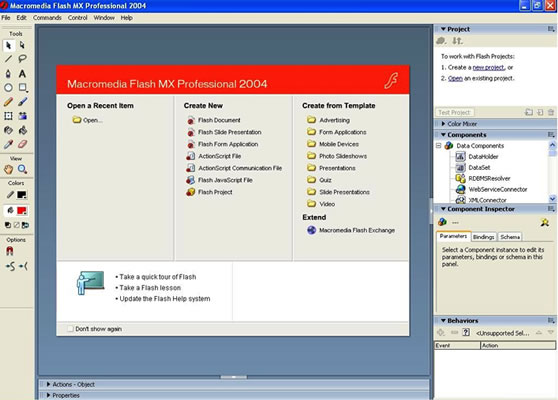Category: Technology
-

eHospital – McKesson (NDC)
Case Study: McKesson (NDC) needed to move their product from an on-premise solution to a SaaS offering.
-

Flash MX 2004 – Adobe (Macromedia)
Case Study: Adobe (Macromedia) was working on the next version of Flash and needed to figure out what the killer features were and how they should work for users.
-
Almost Famo.us
Famo.us is a very promising looking approach to gaining the Flash-like richness that once required a plugin. Is it as good as it looks?
-
New York Times: Design more important than Technology
Bits, the New York Times’ technology blog, ran a post today claiming that design is now more important than engineering or technology. I can’t say I was sad to see this article in the New York Times. Of course, the situation is more complex than represented—without tech the design is only an idea—but this is yet…
-
Steven Sinofsky: Microsoft’s controversial Mr. Windows
This pretty much outlines why I didn’t blog for my last couple years at Microsoft…
-
Silverlight helps jobhunters
Found this article that says half of IT jobseekers still find work quickly. Favorite quote: The survey found that the most in-demand skills are in software development and testing–in particular, those with experience of agile programming, Scrum methodology, and Microsoft’s .Net, Silverlight and SharePoint tools. Business analysis and project management expertise are also proving popular.…
-
Silverlight builds robots?!?
No, the robot in the new Silverlight 3 poster represents your next great idea that you can "bring to life" in Silverlight. There’s a lot packed into this poster—you’ll want to get a closer look. Some lucky folks got these at MIX. For the rest of you, we’ll be releasing some new desktop wallpapers based…
-
Silverlight in the News
I had a few interviews recently which have started to show up in print/online. I point them out because I think this blog is mostly read by my mom and my sister. Actually, they probably don’t read this either but when my memory finally goes completely, I can meander over here and read about how…
-
Flash, HTML, Ajax: Which will win the Web app war?
I ended up being quoted a few times in this recent article about modern web app technologies. I’ll provide a bit more context here. …Microsoft sees things differently, believing that programmers are best off ditching HTML and JavaScript as soon as Web applications start getting rich. "It’s amazing what people have done with HTML, which…